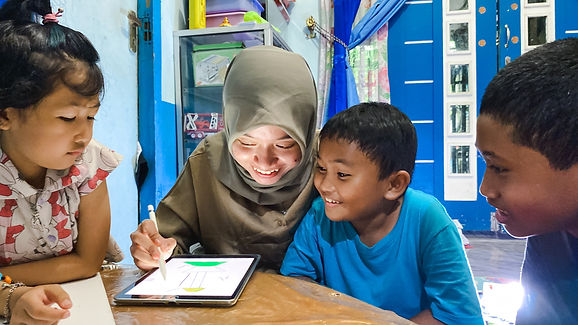
MENTORSHIP PROGRAM
Why is it Necessary?
The International Jumuiya Mentorship Program seeks to provide support primarily to refugee and immigrant students who are facing challenges in their academic journey. These students may be experiencing difficulties related to poor grades, academic performance, language barriers, and attendance issues.
Raising Multilingual
Between 2006 and 2013, there was a 95 percent increase in the number of foreign-born residents, reaching over 22,000 people. This influx of refugees and immigrants has contributed to the Buffalo Public School System becoming the most linguistically diverse in the state, surpassing even New York City. Buffalo now boasts seven predominant languages within its schools, with a total of over 80 different languages spoken. Approximately 18 percent of public school students in Buffalo are English language learners (ELL). As of 2021, the Buffalo Public School (BPS) district, which serves approximately 32,000 students, has experienced an influx of 7,000 new students who are either American immigrants or have a multilingual background.
Absenteeism
Persistent absenteeism has been a persistent concern within the Buffalo Public Schools, and the impact of the pandemic has further exacerbated this issue. As reported by the Buffalo Board of Education, severe absenteeism has shown a significant increase, rising from 17% during the 2018-19 academic year to 39% during the 2021-22 academic year. Notably, during the 2020-21 academic year, when classes were conducted remotely, approximately 34% of students maintained a level of attendance deemed satisfactory by the state. Regrettably, the current school year has witnessed a notable decline, with only 18% of students thus far meeting the satisfactory attendance threshold.
Low Graduation Rates
According to graduation data for the most recent four-year cohort of students (2021), there is a notable difference in dropout rates between English Language Learners/Multilingual Language Learners (ELL/MLL) and non-ELL/MLL students. The data indicates that 18% of ELL/MLL students dropped out before completing their high school education, while the dropout rate for non-ELL/MLL students was 9%. This discrepancy highlights the need for targeted support and interventions to ensure the academic success and graduation of ELL/MLL students, addressing the unique challenges they may face in their educational journey.
Sources:
Dowdall, L. (2022, February 12). School attendance continues to slide. Investigative Post:
https://www.investigativepost.org/2022/02/08/school-attendance-continues-to-slide/
2021: Buffalo City School District - Graduation Rate Data: NYSED Data Site. data.nysed.gov. (n.d.):
https://data.nysed.gov/gradrate.php?year=2021&instid=800000052968
Immigrants, refugees, and languages spoken in Buffalo. (n.d.):
https://ppgbuffalo.org/files/documents/immigration_buffalo_brief_final.pdf
_edited.png)



